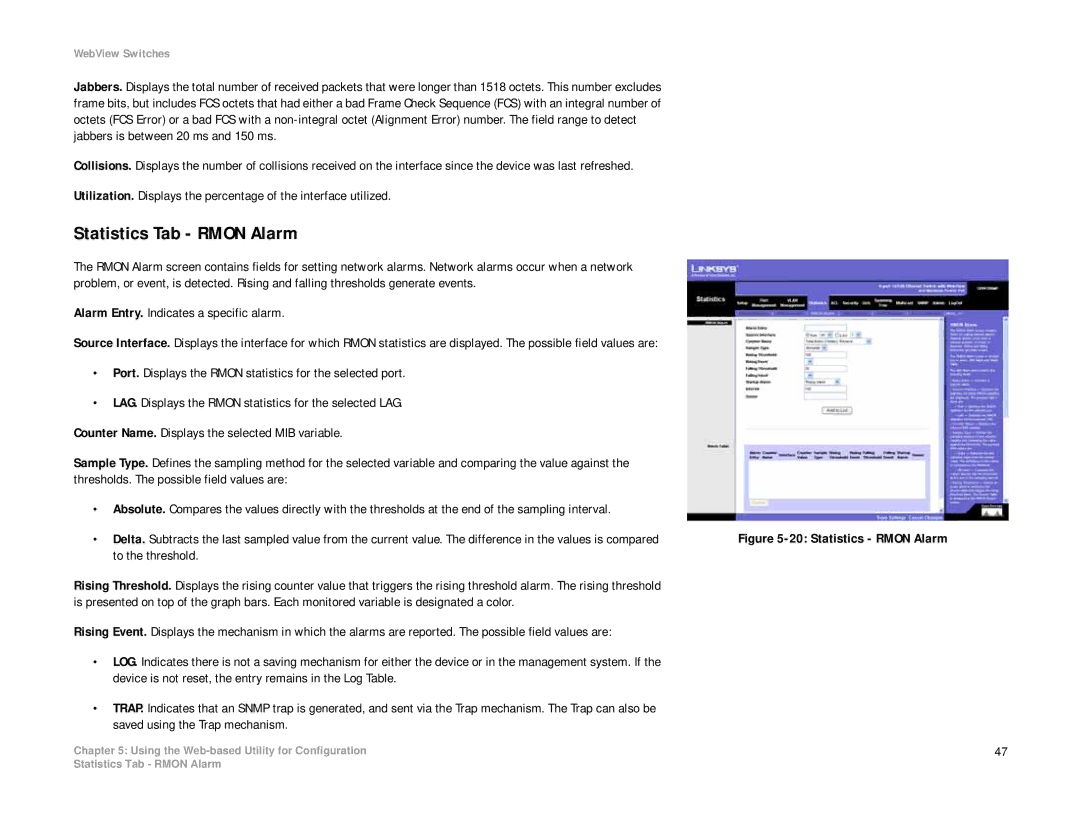
WebView Switches
Jabbers. Displays the total number of received packets that were longer than 1518 octets. This number excludes frame bits, but includes FCS octets that had either a bad Frame Check Sequence (FCS) with an integral number of octets (FCS Error) or a bad FCS with a
Collisions. Displays the number of collisions received on the interface since the device was last refreshed.
Utilization. Displays the percentage of the interface utilized.
Statistics Tab - RMON Alarm
The RMON Alarm screen contains fields for setting network alarms. Network alarms occur when a network problem, or event, is detected. Rising and falling thresholds generate events.
Alarm Entry. Indicates a specific alarm.
Source Interface. Displays the interface for which RMON statistics are displayed. The possible field values are:
•Port. Displays the RMON statistics for the selected port.
•LAG. Displays the RMON statistics for the selected LAG.
Counter Name. Displays the selected MIB variable.
Sample Type. Defines the sampling method for the selected variable and comparing the value against the thresholds. The possible field values are:
•Absolute. Compares the values directly with the thresholds at the end of the sampling interval.
•Delta. Subtracts the last sampled value from the current value. The difference in the values is compared to the threshold.
Rising Threshold. Displays the rising counter value that triggers the rising threshold alarm. The rising threshold is presented on top of the graph bars. Each monitored variable is designated a color.
Rising Event. Displays the mechanism in which the alarms are reported. The possible field values are:
•LOG. Indicates there is not a saving mechanism for either the device or in the management system. If the device is not reset, the entry remains in the Log Table.
•TRAP. Indicates that an SNMP trap is generated, and sent via the Trap mechanism. The Trap can also be saved using the Trap mechanism.
Chapter 5: Using the
Figure 5-20: Statistics - RMON Alarm
47
Statistics Tab - RMON Alarm
